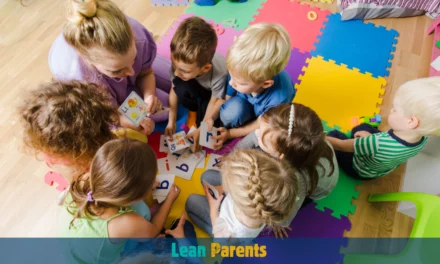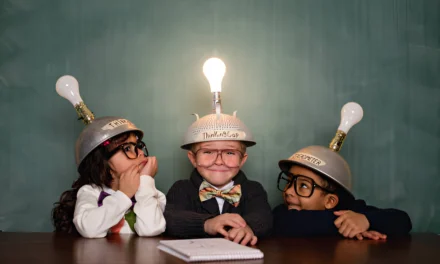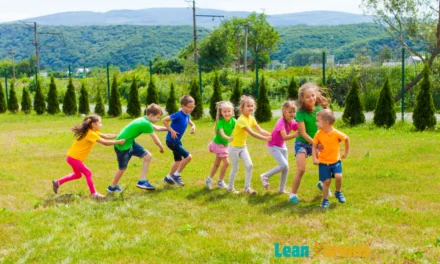Did you know parents can start teaching critical thinking to kids as young as five1? This skill is not just for older kids and adults. It can be developed in young minds with the right methods. This article will show you eight ways to help parents and teachers teach this important skill to young kids.
Critical thinking is a skill that needs to be learned1. It’s not something we’re born with. Even though our brains might not fully understand logic until we’re 12-151, there are many ways to help younger kids think critically. Techniques like creating a supportive environment and solving problems through play can empower young minds.
Key Takeaways
- Critical thinking can be nurtured in young children as early as 5-9 years old.
- Logical reasoning is not a natural ability and requires intentional development.
- Fostering critical thinking lays the foundation for future academic and personal success.
- Proven techniques include creating supportive environments, encouraging questions, and engaging in problem-solving activities.
- Effective critical thinking skills help children make informed decisions, analyze information, and develop emotional intelligence.
By using these eight proven techniques, parents and teachers can help young kids become confident and adaptable thinkers. They’ll be ready to face future challenges. Learn how to unlock your child’s critical thinking and prepare them for a lifetime of success.
Understanding Critical Thinking Development in Children
Children aged 5-9 grow their critical thinking skills in many ways. They improve in basic reasoning, self-esteem, emotional control, and understanding social norms2. This growth is linked to brain development, especially the prefrontal cortex, which helps with reasoning and decision-making2.
Brain Development and Cognitive Growth
As children’s brains grow, so do their critical thinking abilities. They learn to analyze, evaluate, and make informed choices2. Even young ones, like 3-4 year olds, start to understand that people can be more or less trustworthy2.
Age-Appropriate Learning Milestones
Knowing what’s expected at each age helps parents and teachers. It lets them give the right challenges to kids2. For example, 4-year-olds can tell if a source is trustworthy based on past performance2. Kids aged 3-6 also show they can think from different viewpoints2.
Foundation for Future Success
Starting early with critical thinking is key for kids’ success later on3. Even 4-year-olds know that some people are experts in certain areas2. But, younger kids might be more likely to believe what they want to hear2. Teaching critical thinking early helps kids deal with the world’s changes3.
“Developing critical thinking skills in children is essential for their future success, as it helps them adapt to a rapidly changing world where analytical abilities are paramount.”3
Parents and teachers can support kids’ critical thinking by understanding brain and cognitive growth. This helps build a strong foundation for their future23.
The Essential Role of Questions in Child Development

Encouraging questions is key for young children’s critical thinking. Children’s questions show they deeply understand their world. When we don’t have answers, it opens up chances for us to explore together. This teaches them to think differently and evaluate information4.
Open-ended questions are great for boosting critical thinking. They make kids think deeper, as they can’t just say yes or no5. These questions help kids think creatively and improve their communication skills5. Plus, sharing their thoughts boosts their confidence5.
When we ask thoughtful questions, we show kids the value of curiosity. This inspires them to ask questions too and love learning. Talking with them in a way that challenges helps build their critical thinking and problem-solving skills. These skills are important for their future.
Creating a culture of curiosity and teamwork helps kids become active learners. The role of questions in child development is crucial, opening doors to a lifetime of growth and critical thinking.
Creating a Supportive Environment for Critical Thinking
Teaching young children to think critically starts with a supportive learning space. This environment should encourage exploration and curiosity. It should also be a place where children feel safe to share their thoughts and ideas.
Physical Space Organization
The way a child’s learning space is set up is very important. It should have areas for hands-on learning, working together, and quiet time. Add things that catch their eye to make them curious and want to learn more6.
Educational Materials and Resources
Choose educational materials and resources with care. Offer a variety of books, puzzles, art supplies, and toys that challenge them. Also, use technology like educational apps to introduce them to different ideas and views7.
Emotional Safety for Expression
Creating a safe space for children to express themselves is key. Make sure they feel okay to share their thoughts and explore new ideas without fear. Encourage open talks, value their views, and give feedback that is helpful and kind. This way, they can feel brave to question and think deeply7.
In the end, a supportive learning environment is crucial for teaching critical thinking. By designing this space well, we can help young minds grow, question, and reach their full potential67.
Problem-Solving Through Play and Experience
Teaching young children to solve problems is key for their growth and success. Activities like play-based learning and experiential learning help build these skills8. Playing with blocks or puzzles helps kids break down big problems into smaller ones. They learn to think of many ways to solve a problem8.
This kind of play also boosts creativity, flexibility, and how well they can communicate8.
It’s important to give kids chances to explore and learn by doing9. Play-based learning makes kids think critically and creatively. At the same time, free play helps them learn to get along with others, feel empathy, and be strong9.
Playing with different toys and materials can spark their creativity. It encourages them to find new ways to solve problems8.
Asking kids deep questions during playtime helps them think more creatively and solve problems better8. For example, asking them to predict what happens next in a story can improve their critical thinking. It also helps them use their imagination to explain things8.
Creating a supportive place where kids can explore and learn through play is crucial. It helps them develop the skills they need to succeed in life9.
Fostering Independent Decision Making

It’s important to give kids chances to make their own decisions. Choice-based learning activities let them practice in a safe way. This helps them feel more confident in their choices and learn from them10. Studies show that when kids get to choose what they learn, they learn more deeply and enjoy it more10.
Choice-Based Learning Activities
Role-playing scenarios are a great way to teach kids. One student acts out a role, while others give feedback. This helps them understand things like taking care of the environment10.
Another good method is encouraging reflective thinking. Activities like journaling and setting goals help kids see their own patterns. Mindfulness, like deep breathing, also helps them make better choices by controlling their emotions10.
Building Decision-Making Confidence
Nurturing analytical thinking is key. Techniques like asking questions and solving problems help kids make smart choices. These skills are useful in many areas of life, like choosing a career or managing money10.
By giving kids chances to make choices and build confidence, we help them grow up to be independent. They’ll be ready to face the world’s challenges11.
| Technique | Benefits |
|---|---|
| Role-Playing Scenarios | Helps students understand complex concepts and gain perspective-taking skills. |
| Reflective Thinking Exercises | Promotes self-awareness, emotional regulation, and better decision-making. |
| Analytical Thinking Activities | Equips students with problem-solving skills and the ability to make informed choices. |
“Effective decision-making skills enhance self-discipline and determination, leading to better homework completion, positive social behavior, and improved academic grades.”10
By supporting independent decision-making and choice-based learning, we help kids grow into confident, self-reliant thinkers. They’ll be ready for whatever the future brings11.
The Power of Critical Thinking in Early Education
Teaching young children to think critically is a smart move for their future12. It lets them see the world, find new info, and make smart choices12. These skills help them grow into lifelong learners ready for big challenges12.
Critical thinking also boosts language skills in kids, helping them use more complex words12. It helps them grasp basic math by spotting patterns and understanding shapes12. Activities that encourage problem-solving and creativity also enhance critical thinking12.
13 Critical thinking grows from conversations kids have with adults and from their curiosity13. Teaching them to solve problems is key, and using digital tools in early education helps them think critically in today’s world13.
| Skill Development | Impact on Early Education |
|---|---|
| Language Skills Expansion | Promoting the use of more complex language and vocabulary1213 |
| Foundational Mathematical Skills | Helping children recognize patterns and understand how shapes work together12 |
| Problem-Solving Abilities | Fostering inquiry-based learning and critical thinking13 |
| Digital Literacy | Promoting critical thinking in a digital world13 |
By focusing on critical thinking in early education, we prepare kids to be adaptable and innovative1213. This early investment in their minds will shape their future in school and life.
Developing Analytical Skills Through Daily Activities
Everyday activities can help young children develop analytical skills. By using hands-on learning, parents and educators can build a strong analytical foundation for kids. This will help them in the future14.
Kitchen Science Experiments
Kitchen science experiments are great for developing analytical skills. These activities teach kids about cause and effect, measurement, and prediction. They also spark curiosity14.
For example, mixing baking soda and vinegar shows kids how reactions work. They can also learn about density by floating eggs in water. These fun experiments improve critical thinking skills.
Nature Exploration Activities
The outdoors is perfect for learning analytical skills. Nature activities help kids observe, compare, and make hypotheses14. They can identify leaves, track animal paths, or watch a caterpillar grow.
These experiences encourage kids to think critically and make connections. They learn to draw logical conclusions about the world around them.
| Skill | Benefit |
|---|---|
| Observation | Develop the ability to carefully examine and notice details. |
| Analysis | Enhance the capacity to break down information and identify patterns. |
| Inference | Strengthen the skill of drawing logical conclusions based on available evidence. |
| Problem-Solving | Foster the aptitude to identify challenges and find creative solutions. |
| Logical Reasoning | Cultivate the capacity for rational, step-by-step thinking. |
By adding these activities to their learning, parents and educators can help kids develop essential analytical skills. These skills are crucial for success in today’s world141516.
“Analytical thinking involves breaking down complex problems, gathering information, identifying patterns, and drawing logical conclusions.”
– Diane Halpern, award-winning educator and past president of the American Psychological Association16
Teaching Media Literacy to Young Minds
In today’s digital world, teaching kids about media literacy is key. It helps them check if information is true, spot bias, and understand why content is made. This is important for all kinds of media.
Talking to kids about what they watch, scroll, or search online is a great way to teach them. It helps them think critically and become smart users of information early on.
17 Media literacy means knowing how to use and understand different kinds of communication. By talking openly about the digital world, parents and teachers can help kids learn these important skills.
17 It’s important to talk to kids about what they see and hear in media. Teaching them to question sources and look at ads together helps them think critically. This is especially important in today’s digital age.
17 Teaching kids to be media savvy helps them grow into thoughtful and responsible users of information. They’ll be able to handle the complex world of modern media.
| Key Media Literacy Initiatives | Scope and Impact |
|---|---|
| National Association for Media Literacy Education (NAMLE) | A national nonprofit organization advocating for media literacy in schools and as a basic life skill18. |
| MediaSmarts | A Canadian center for news and media literacy, offering a wide range of resources for students and educators18. |
| The News Literacy Project | Provides both in-person and online training for educators interested in including media literacy in their teaching18. |
| American Library Association | Offers free materials and videos on media literacy-related topics18. |
18 More and more adults want media literacy taught in schools. A survey found 62% of adults wish they had learned about it in school.
17 Encouraging kids to make their own content boosts their creativity. It also helps them think critically. Teaching these skills early helps create a generation of informed digital citizens.
19 Parents are key in teaching kids about media literacy. They can start conversations at home. Summer programs in London, like those offered by Skola, combine language learning with media literacy.
“Nurturing media literacy skills in young minds ensures they blossom into thoughtful and responsible consumers of information.”
Encouraging Diverse Perspectives and Viewpoints
It’s important to show kids different views and cultures. This helps them think critically. We can do this through fun activities that promote diversity, perspective-taking, and cultural awareness.
Cultural Awareness Activities
Reading books by various authors and exploring cultures can be very enriching. For instance, a school had a Diversity Day. Kids showed off their traditional clothes, food, dances, and songs. This hands-on learning helped them appreciate diversity20.
Perspective-Taking Exercises
Teaching kids to see things from others’ viewpoints builds empathy. They can try using a wheelchair to understand challenges or find common ground with others. This helps them see beyond differences20.
Research shows diverse teams make better choices 87% of the time. Companies with diverse leaders grow 45% faster. A study by the Boston Consulting Group found diverse teams innovate 19% more21.
Also, 85% of companies link diversity to innovation. Inclusive cultures are more likely to innovate and meet financial goals. They are 3.8 times more likely to adapt to change21.
By introducing kids to different views, we help them understand the world better. This prepares them for success in today’s world.
Building Emotional Intelligence Alongside Critical Thinking
Emotional intelligence and critical thinking work together well. They help a child grow in many ways. By learning to handle their feelings, kids can make smarter choices and solve problems better22.
Teaching kids to be aware of their feelings and understand others helps a lot. It boosts both emotional smarts and thinking skills. This is key for their growth.
Studies show that teaching emotional smarts early on boosts thinking skills a lot22. Kids who learn these skills think better than those who don’t. They also learn to control their feelings better, which helps in solving problems.
How well a kid manages their feelings affects their thinking22. There’s a strong link between emotional smarts and using thinking skills well23. These skills are important for being a good leader and problem-solver.
Even though these skills are valuable, not many teachers teach them yet23. But, using these skills helps kids deal with tough challenges. It also helps them make good choices and get along with others23.
By focusing on both emotional smarts and thinking skills, we prepare kids for the future. This way, they can handle the world’s changes well.
| Emotional Intelligence Factors | Impact on Critical Thinking in Children |
|---|---|
| Self-Awareness | Enables children to recognize their own emotions and thought processes, leading to more mindful decision-making. |
| Empathy | Helps children consider diverse perspectives, promoting a deeper understanding of problems and creative solutions. |
| Emotion Regulation | Allows children to manage their feelings, reducing impulsivity and fostering more logical, reasoned thinking. |
| Social Skills | Enables children to communicate effectively, collaborate with others, and navigate social dynamics, all of which support critical thinking development. |
By working on emotional smarts and thinking skills together, we prepare kids for the future. This approach helps them become adaptable, caring, and sharp problem-solvers.
“Developing emotional intelligence alongside critical thinking can help individuals become more effective leaders, problem-solvers, and communicators, leading to a positive impact in personal and professional lives.”23
The Role of Parents in Nurturing Critical Thinkers
Parents are key in helping their kids think critically. By showing how to question and look at things from different sides, they teach by example24. They also make learning fun by using everyday life, starting conversations, and helping kids think about their experiences24.
Modeling Critical Thinking Behavior
Kids love to learn and explore24. When parents think critically, they encourage their kids to do the same24. This helps kids solve problems and make good choices, boosting their confidence24.
Creating Learning Opportunities
Being a good parent means being flexible, respectful, and patient24. Parents can help kids think critically by talking openly, teaching them to find reliable sources, and showing them how to check facts from different angles25. Activities like cooking, gardening, or building projects also help kids think critically25.
- Encourage kids to ask questions and explore24.
- Teach them to analyze information, especially online25.
- Play guessing games and solve problems together25.
- Use technology in early learning to support critical thinking25.
By using these methods, parents can create a home that encourages critical thinking. This helps kids become confident, curious, and analytical24. As Julie Bogart, author of “The Brave Learner,” shows, this approach can greatly benefit a child’s growth and success26.
| Key Strategies for Nurturing Critical Thinkers | Benefits |
|---|---|
| Modeling critical thinking behavior | Inspires children to question, investigate, and analyze information with confidence |
| Engaging in open-ended discussions and encouraging information verification | Develops problem-solving, decision-making, and digital literacy skills |
| Incorporating play-based STEAM activities and real-world applications | Enhances observation, logical thinking, and critical thinking skills |
Using Stories and Literature to Enhance Reasoning
Storytelling and literature are great ways to boost reasoning skills in kids. Reading different books and talking about characters and storylines can spark critical thinking. This method helps kids think deeply, understand others, and see things from different angles – all key for critical thinking27.
Through stories, kids learn to doubt assumptions, break down information, and draw logical conclusions27. This not only sharpens their reasoning but also broadens their view of the world. As they dive into various stories, they learn to spot good and bad reasoning and truth, a crucial part of logical thinking27.
Also, reading a wide range of books, from old tales to modern stories, introduces kids to many views and cultures. This enriches their emotional smarts and ability to feel for others, making their critical thinking even stronger28. By making stories and books a regular part of school, teachers can lay a strong base for analytical minds28.
FAQ
What are the proven techniques to encourage critical thinking in young kids?
How does brain development and cognitive growth impact critical thinking skills in children?
Why are questions so important for fostering critical thinking in children?
What are the key elements of creating a supportive environment for critical thinking?
How can problem-solving skills be developed through play and hands-on experiences?
Why is independent decision-making crucial for developing critical thinking skills?
What are the benefits of developing critical thinking skills in early education?
How can everyday activities be transformed into opportunities for developing analytical skills?
Why is teaching media literacy crucial in the digital age?
How can exposing children to diverse perspectives and viewpoints foster critical thinking skills?
What is the connection between emotional intelligence and critical thinking skills?
What role do parents play in nurturing critical thinking skills?
How can stories and literature enhance reasoning skills in young children?
Source Links
- Parents’ Guide to Critical Thinking: Ages 5-9 | REBOOT FOUNDATION
- Children’s Critical Thinking When Learning From Others
- Critical Thinking for Kids | Bright Horizons®
- The importance of critical thinking for young children
- The Power of Open-Ended Questions – Minnesota Children’s Museum
- How to Create an Environment that Cultivates Critical Thinking
- Critical Thinking & Why It’s So Important – Nichols College
- The Genius of Play | Nurture Problem Solving Through Imaginative Play
- The Power of Play in Early Childhood Education – PlayWell Brooklyn
- Empowering Students With Effective Decision-making Skills: A How-to Guide
- How to foster independence in children — Red Bridge ECC
- Critical Thinking Skills & Their Importance in Early Learning
- Why is Critical Thinking important in Early Childhood Education?
- Developing Analytical Thinking Skills: A Practical Approach for Elementary Education | Everyday Speech
- Enhancing Your Critical Thinking and Analytical Skills
- The Importance of Critical Thinking when Using ChatGPT (and Other Large Language Models)
- How to Develop Media Literacy in Children: 5 Tips | SPH
- Emphasizing media literacy for students – Democracy Toolkit
- Empowering Young Minds: The Role of Media Literacy in Modern Education
- How can you encourage critical thinking about diversity and inclusion?
- Embracing the Power of Diverse Perspectives
- The Link Between Emotional Intelligence and Critical Thinking
- Critical Thinking + Emotional Intelligence
- Raising Critical Thinkers | themompsychologist.com
- Nurturing Critical Thinking for Preschoolers – Kutest Kids
- Raising Critical Thinkers: A Parent’s Guide to Growing Wise Kids in the Digital Age
- Critical Thinking | Basic Reading and Writing
- Helping Students Hone Their Critical Thinking Skills





